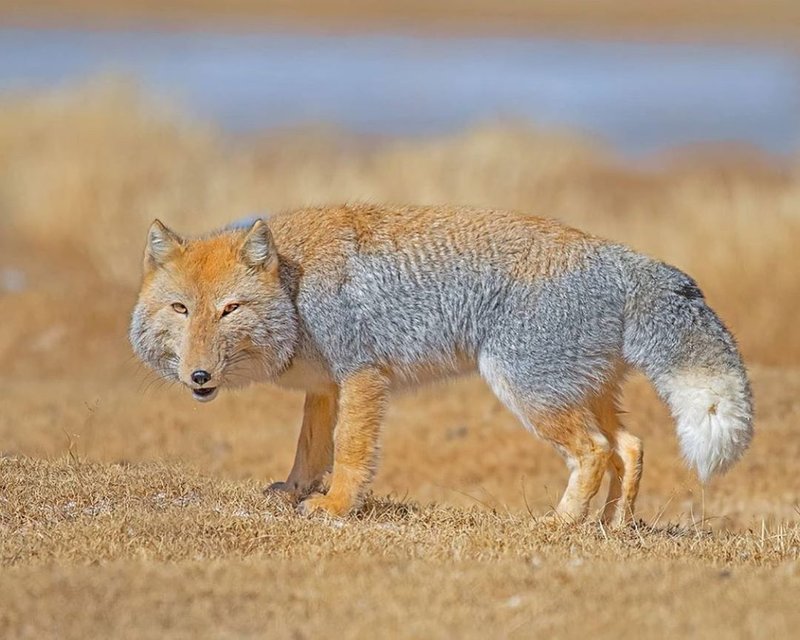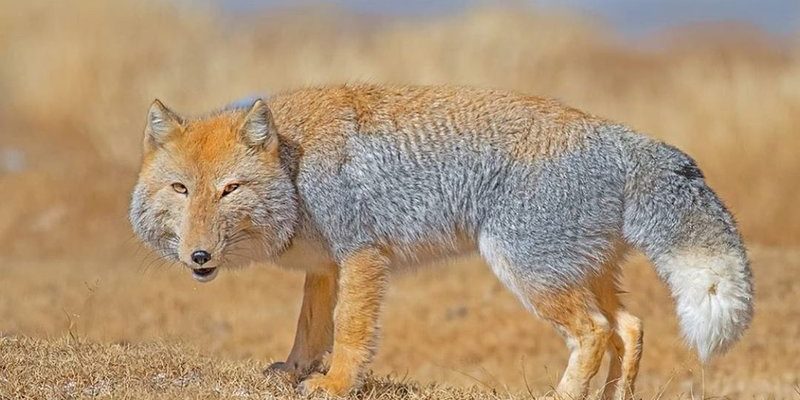
The Tibetan fox, with its distinctive flat face and thick fur, is a fascinating predator. Picture it roaming the windswept highlands, using its keen senses to navigate the rocky terrain. Its hunting techniques and diet are not just about feeding; they’re about understanding the environment and making the most of what’s available. Let’s dive deeper into what makes this fox unique in its natural approach to survival.
A Unique Environment: The Tibetan Plateau
To understand the Tibetan fox’s diet and hunting strategies, we first need to consider its home—the Tibetan Plateau. Often referred to as the “Roof of the World,” this vast region is characterized by extreme weather conditions. Temperatures can plummet, and food sources can be hard to come by, especially during winter months.
The Tibetan Plateau is primarily made up of grasslands, rocky outcrops, and alpine meadows. Because of this, the Tibetan fox has adapted to be a high-altitude hunter. It’s not just about surviving; it’s about thriving in an environment where many other animals struggle. The altitude influences everything from the availability of prey to the fox’s hunting habits.
Interestingly, the Tibetan fox tends to favor areas with sparse vegetation. You might wonder why. Well, open spaces allow the fox to spot its prey more easily and gives it ample room to chase down its meal. This unique habitat shapes how this clever predator hunts and what it eats.
Diet: What Do Tibetan Foxes Eat?
The Tibetan fox primarily feeds on small mammals, with their main diet consisting of pikas, rodents, and occasionally birds. This diet is quite fitting for a creature living in such a challenging environment. Pikas, for instance, are common in the Tibetan Plateau and provide a readily available food source.
Here’s the thing: Tibetan foxes are not picky eaters. They will also scavenge for carrion when necessary. Being opportunistic helps them survive when fresh prey is hard to find. Imagine having a buffet of options, but only certain dishes are available on some days—this adaptability ensures that the Tibetan fox can withstand fluctuations in food availability.
Many might wonder how they catch such quick and agile prey. The Tibetan fox uses a combination of stealth and speed. By staying low and moving quietly, it gets as close as possible before making a daring leap or sprint to catch its next meal. It’s a thrilling sight, watching this nimble predator in action!
Hunting Strategies: Stealth and Strategy
Now, let’s explore the clever hunting strategies of the Tibetan fox. These foxes rely heavily on their acute senses—particularly their sense of hearing. The Tibetan Plateau is often quiet, allowing the fox to detect even the faintest sounds of its prey. This is where those keen ears come into play!
Tibetan foxes often hunt alone or in small family groups. Working as a team can increase their chances of success. Picture two foxes moving strategically through the grasslands, coordinating their movements to flush out prey. This social behavior not only helps them catch more food but also strengthens family bonds.
You might also find it interesting that Tibetan foxes sometimes use the terrain to their advantage. They might wait patiently near a burrow or a rocky outcrop and then pounce on unsuspecting prey. This patience and knowledge of their environment showcase their intelligence. They know when to lie low and when to strike, a dance of instinct and skill that keeps them fed.
Seasonal Changes in Hunting Behavior
As seasons change on the Tibetan Plateau, so do the hunting habits of the Tibetan fox. In the warmer months, food is more abundant. This is when they tend to be more active and spend longer hours hunting, taking advantage of the increased availability of prey.
However, things shift dramatically as winter approaches. With heavy snow covering much of the landscape, their access to prey becomes limited. In these harsh conditions, the Tibetan fox may alter its hunting methods, becoming more stealthy and strategic. They might also expand their search for food, traveling longer distances to find a meal.
During this time, the fox’s metabolism may slow down, allowing it to conserve energy. This adaptation is crucial for survival in a place where food is not always guaranteed. It’s a smart move that shows how nature often forces animals to adjust to survive.
Impact of Climate Change on Tibetan Foxes
With changing climate conditions affecting the Tibetan Plateau, the future of the Tibetan fox is uncertain. Fluctuating temperatures and changing weather patterns can affect food availability and habitat quality. For instance, warmer temperatures may drive some of their prey species to higher elevations, making it harder for the foxes to find food.
Furthermore, as human activities encroach on their natural habitat, the balance of this delicate ecosystem is disrupted. You might wonder what this means for the Tibetan fox in the long run. If conditions continue to worsen, it could lead to a decline in their population. This not only impacts the foxes but also the entire ecosystem, as each species plays a role in maintaining balance.
Conservation efforts are vital to ensure that these unique creatures can continue to thrive. Understanding their diet and hunting strategies is just one piece of the puzzle in protecting the Tibetan fox and its fragile environment.
The diet and hunting strategies of the Tibetan fox reflect not just its adaptability but also the resilience of life in one of the most challenging environments on Earth. From feasting on pikas to employing clever hunting tactics, these foxes showcase an impressive array of survival skills.
As we learn more about the Tibetan fox, we gain insights into how wildlife adapts to changes around them. So, the next time you think of a fox, remember the Tibetan fox and its remarkable journey through rugged terrain. It’s a testament to nature’s creativity and tenacity, reminding us that survival is not just about instinct but also about adapting to the world around us.

